Reviewing my short story collection, I can see that trees and nature are a big theme. Well, aren’t I named after a tree? I love a wander among the trees, and I’m lucky enough to live so close to a wooded common that it’s part of my view out of the window. So I’m naming my update blogs/newsletter series “At the Edge of the Woods”. It’s a nod, too, to the books “Into the Forest” and “Into the Woods”, even though they’re each on totally different topics. In the forest we find balm for our frazzled minds. In the forest we learn who we really are.
What I’ve read:
The Wood at Midwinter by Susanna Clarke
This is actually a short story. But it’s illustrated and told so beautifully that we forgive the publisher for charging us the price of a book. It’s in the vein of The Ladies of Grace Adieu, being a gentle fairy-folk-saint tale, with a wonderful pig. I agree with other readers that it ends abruptly – I thought I still had a few pages to go, and they turned out to be the notes at the end. It has a feel of, “Well, there’s no point going into detail any more – I showed you her seeing the vision, and it came true, the end” about it.
Dread Wood by Jennifer Killick
It’s hard to find convincing ways of separating modern children from their adults and their mobile phones in order to put them in real danger. But Jennifer Killick has found an ingenious way of solving this problem so she can put her four “losers” into nail-biting after nail-biting situation. I liked, too, that the main character doesn’t come from a stable, middle-class background. He sometimes goes to school hungry, and he seldom sees his parents, and the book ending doesn’t solve this problem either.
Into the Forest by Dr Qing Li
I used to get very attached to trees near my house as I grew up, and I still feel distressed when I witness one being cut down. A walk in the woods behind our home refreshes me, and a forest bathing session I went on last autumn really did relax me as promised – I think perhaps I should have waited before driving home, I was so blissed out! Our leader had told us nuggets of information about why spending time in the forest is so good for us, and I wanted to find out more, so I bought and read this book.
It’s easy to get through - large text, spaced out, lots of pictures (sumptuous photos of forests). There’s a bit about the history of how and why it became a thing in Japan, and lots of information (? – I’m no scientist) about how trees affect our different senses and hence our well-being. And because it’s not always possible for us to make regular trips into the wild, there are suggestions on how we can bring the wild into our homes. It concludes with a look into the future, with hope.
Equal Rites by Terry Pratchett
After discovering the Tiffany Aching books, I bowed to the temptation to buy another Discworld Novel, and was delighted to find it’s another that features Granny Weatherwax – the first, no less. Now I’m in my crone years, I really think there should be more books about crones. I suppose there’s an idea that crones are settled in life, unlike maidens who are looking for their role in life. If they feature in fairy or folk tales, they are witches or godmothers, preventing the hero or heroine getting what they want or helping them along the way. What about their own journeys? Like the inner journey where the children leave home, and you suddenly wonder what you’re meant to do next?
Moondial by Helen Cresswell
Helen Cresswell was a popular author when I was a child, and I had my first competition win through writing an “ending” for her Beachcombers for a contest in the Puffin Magazine. (It rather spoilt my elation when I learned only four people had entered, and so I was bound to get a prize!) It fits that vibe I like of encounters with historical ghosts that change the lives of both the ghosts and those that see them. It’s a gentle story with a rather bittersweet ending for the ghosts, set round a real stately home in midsummer, often with the sun blazing down. I did wonder why the villain, Miss Raven/Miss Vole chose to pursue Sarah down the years if she thought the child was such a burden on her.
Helen Cresswell is one of the writers in The Thorny Paradise, too (see my writeup blog of 2024), which adds to the appeal of reading this book now. She had a long writing career, and according to one of her daughters she wrote one draft and that was it. This blows my shilly-shallying mind!
The Magician’s Nephew by CS Lewis
I was thinking about portals, because I use them quite a lot in my short stories, and realised that the puddles in one of them owe a lot to the pools in The Magician’s Nephew, which act as gateways to many different worlds.
Though this was written after five other Narnia books, it’s the origin story of Narnia, including how the lamppost got into Narnia and why a wardrobe in a spare room should be the entry to a different world. CS Lewis drew on his love of E Nesbit’s works here, but adds an emotional heart that the fantasy novels of Nesbit lack, with Digory’s longing to find a cure for his mother. There’s darkness and foreboding, but there’s also so much fun as Queen Jadis, escaping from a world dying through her own curse, causes havoc in Edwardian London.
What I’ve watched
Maleficent
I thought this was sometimes rather sentimental, especially in the “perfect world” sequence in the beginning, and in the blonde perfection of the princess, but an interesting alternative to the tale, where the evil fairy has a very understandable reason for her fury. What I liked most is that an older female character is central to the story and has a character arc. But can someone tell me how she suddenly got her wings back in the final battle?
What I’ve written
At the start of the month I sent my children’s gargoyle fantasy to another clutch of agents. It’s Ross Montgomery’s Chime Seekers meets Lucy Strange’s The Marsh Sisters. Now I just have to wait for a few months and see if anyone is interested.
So back to editing meanwhile. I’m putting my short fantasy/fairy tales, some previously published, into a collection to self-publish some time this year. There are a lot of trees in it, but I was also surprised how much weaving went on. My title is The Tapestry Unravels. Can you guess what song inspired that?
I did get distracted from my editing with a call for submissions for fiction based on “Sleeping Beauty”. I reflected on the way the Grimm Brothers told it: the good fairy puts the entire court to sleep once the princess slumbers, down to the cook and kitchen boy. That’s wonderful for the princess, waking a hundred years later with a full household ready to serve her, bring her her toilette and make her favourite dinner. But what about the mothers and fathers, wives, husbands and lovers of those trapped inside, doomed to never see their loved ones again?
Where I’ve been
It was very frosty the day we walked in Epping Forest, but the sun was out and we enjoyed the gnarliness of the ancient trees. The forest was once part of a much larger forest that covered much of south Esssex. Sadly, no fungi picking is allowed, so the local witches have to get theirs from the supermarket instead. Signs also warned against selling anything here, which I thought meant the goblin market was forbidden too, but my husband said he didn’t think any self-respecting goblin would be deterred by such a ban. We explored Ambresbury Banks, the remains of an earthworks. Local legend says it was the site of the defeat and death of Queen Boudicca (Boadicea) but I wondered about the name, because it sounds like Ambrose Aurelius, warleader in post-Roman Britain, King Arthur’s uncle in legends. We had lunch at a fab pub at the end, with this Frida Kahlo cushion.
I finally managed to go to a local wassailing ceremony this year. We sang, we paraded round the orchard banging drums, we speared bread slices on twigs to attract the robins, and we drank spiced apple juice, all to bless the orchard. I plan to come back in the summer to see how well the apple trees responded!
Another delightful discovery was the remains of the gardens of Warley Place outside Brentwood. My friend drove us there and we explored what was left of a paradise designed and tenderly cared for by Ellen Ann Willmott. A ghost garden is a gentler thing than a ghost house, all moss and ferns and tumbled brick. It reminds me of the haunted greenhouse novelette sitting on my drive, waiting for an edit. In February I’m taking a course on gothic writing with Curtis Brown, which I think will give me lots of inspiration to polish it up.

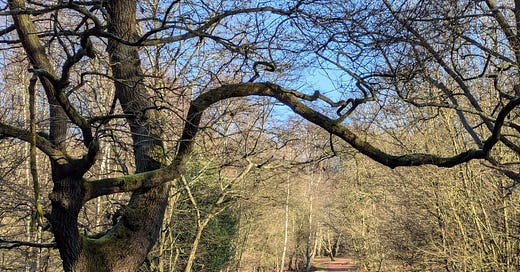



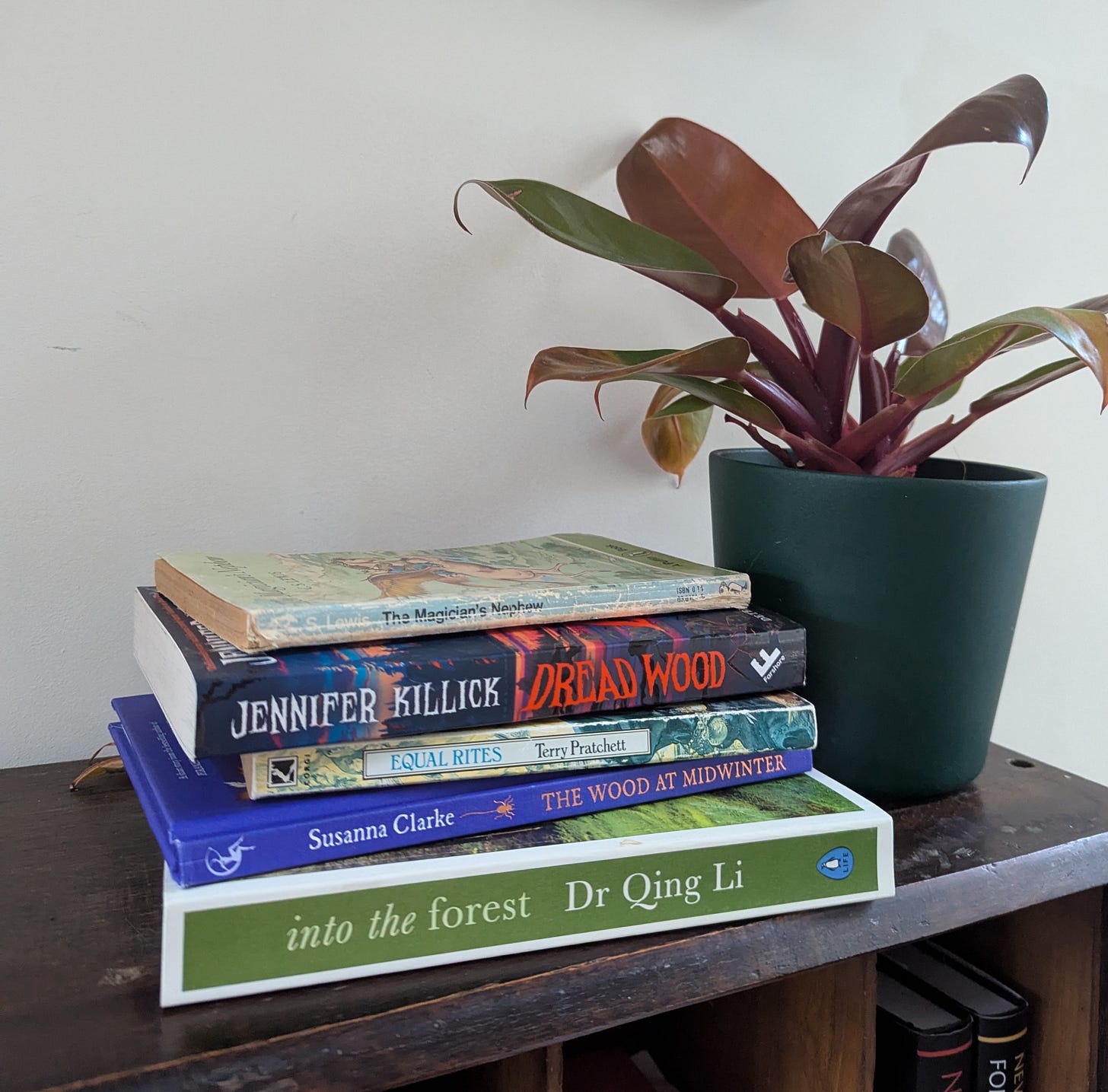
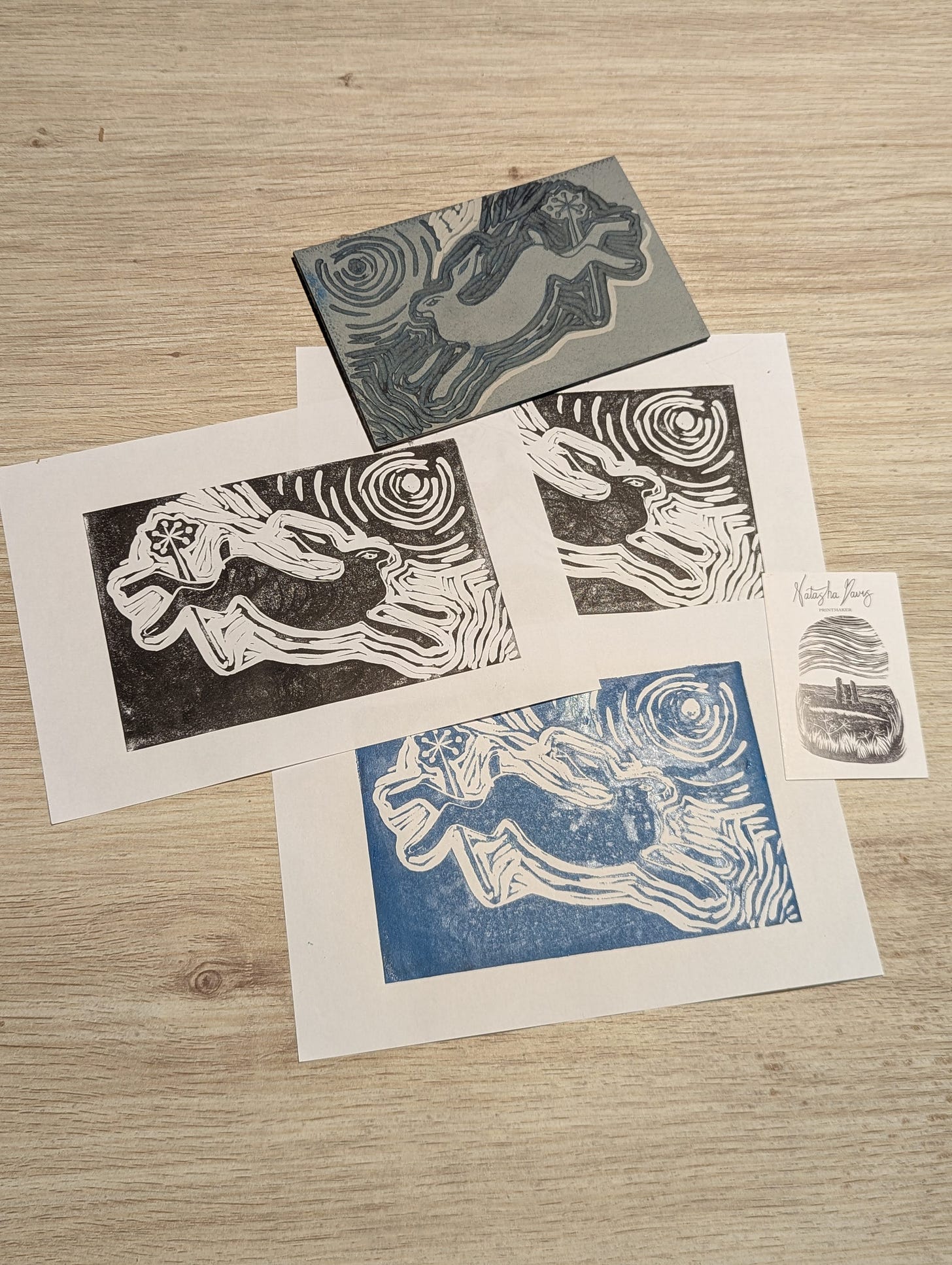
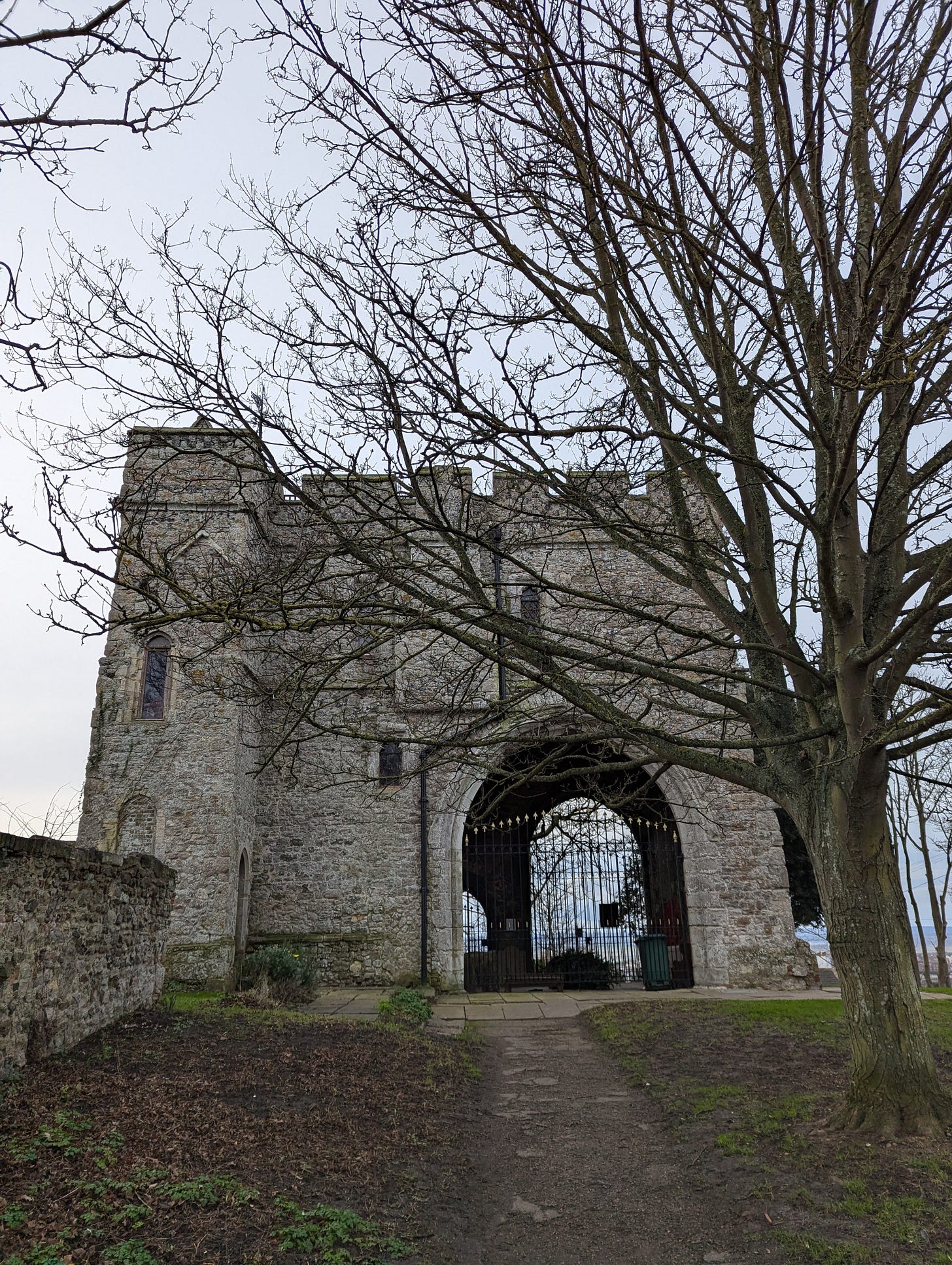
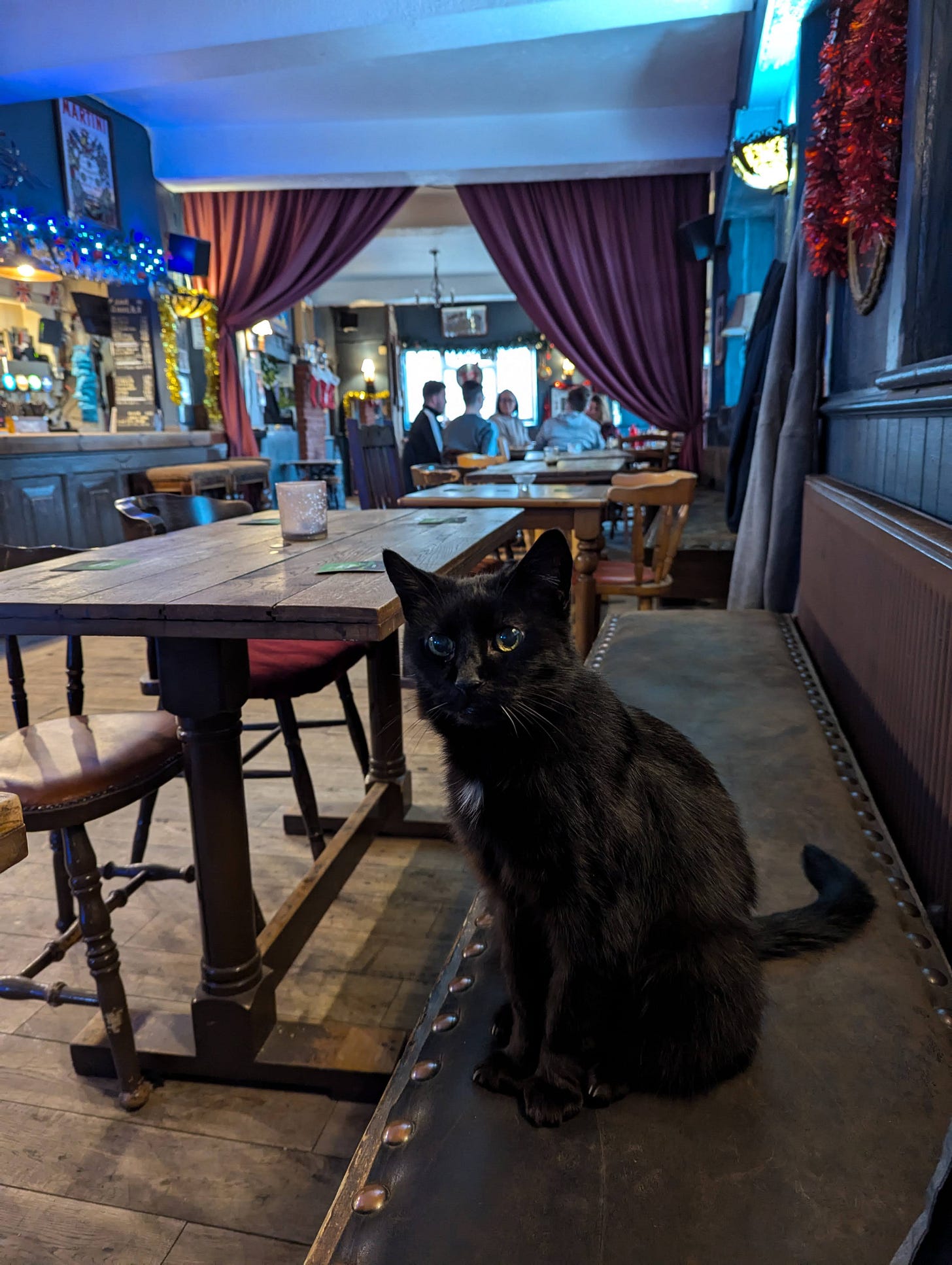
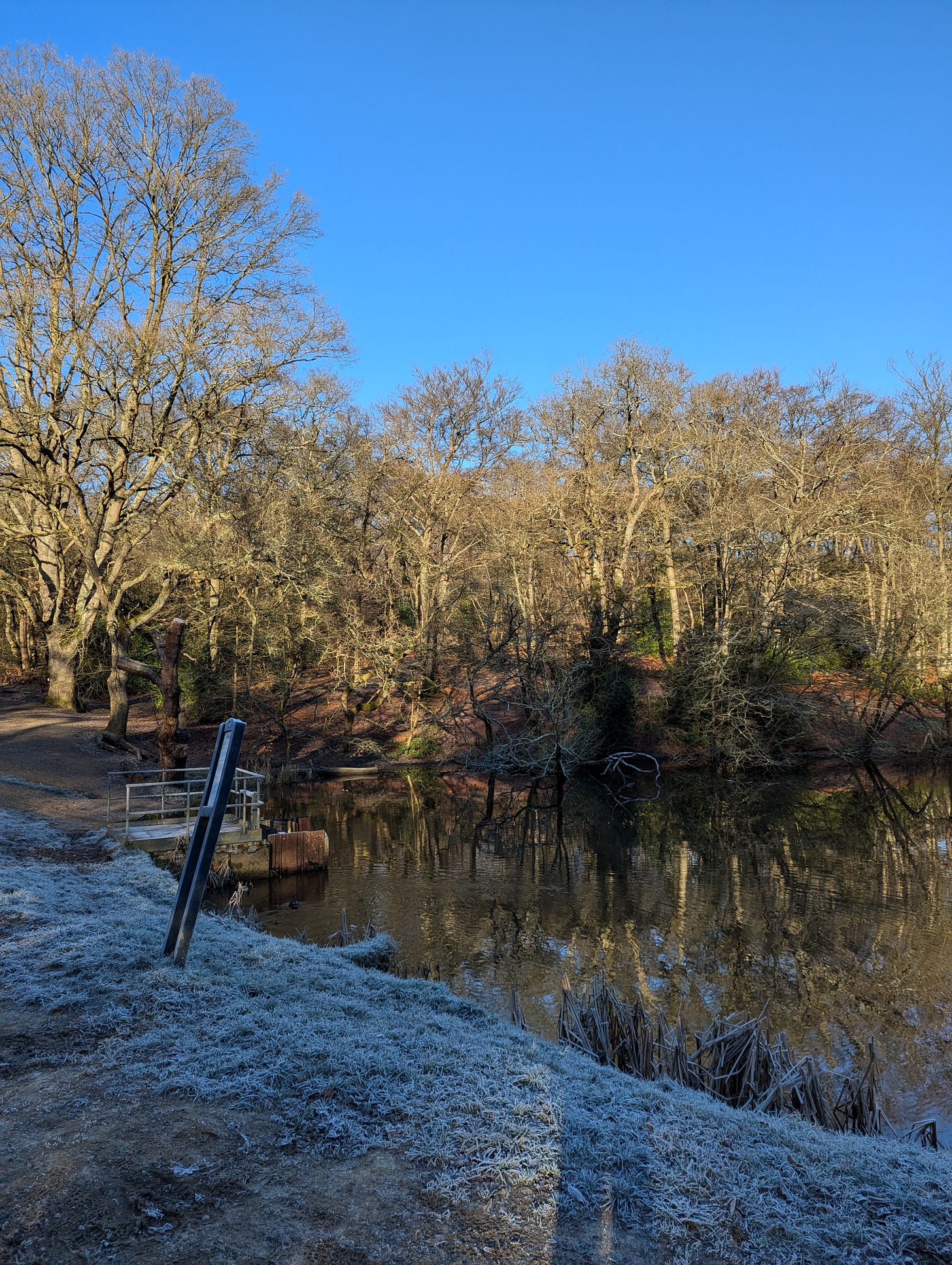
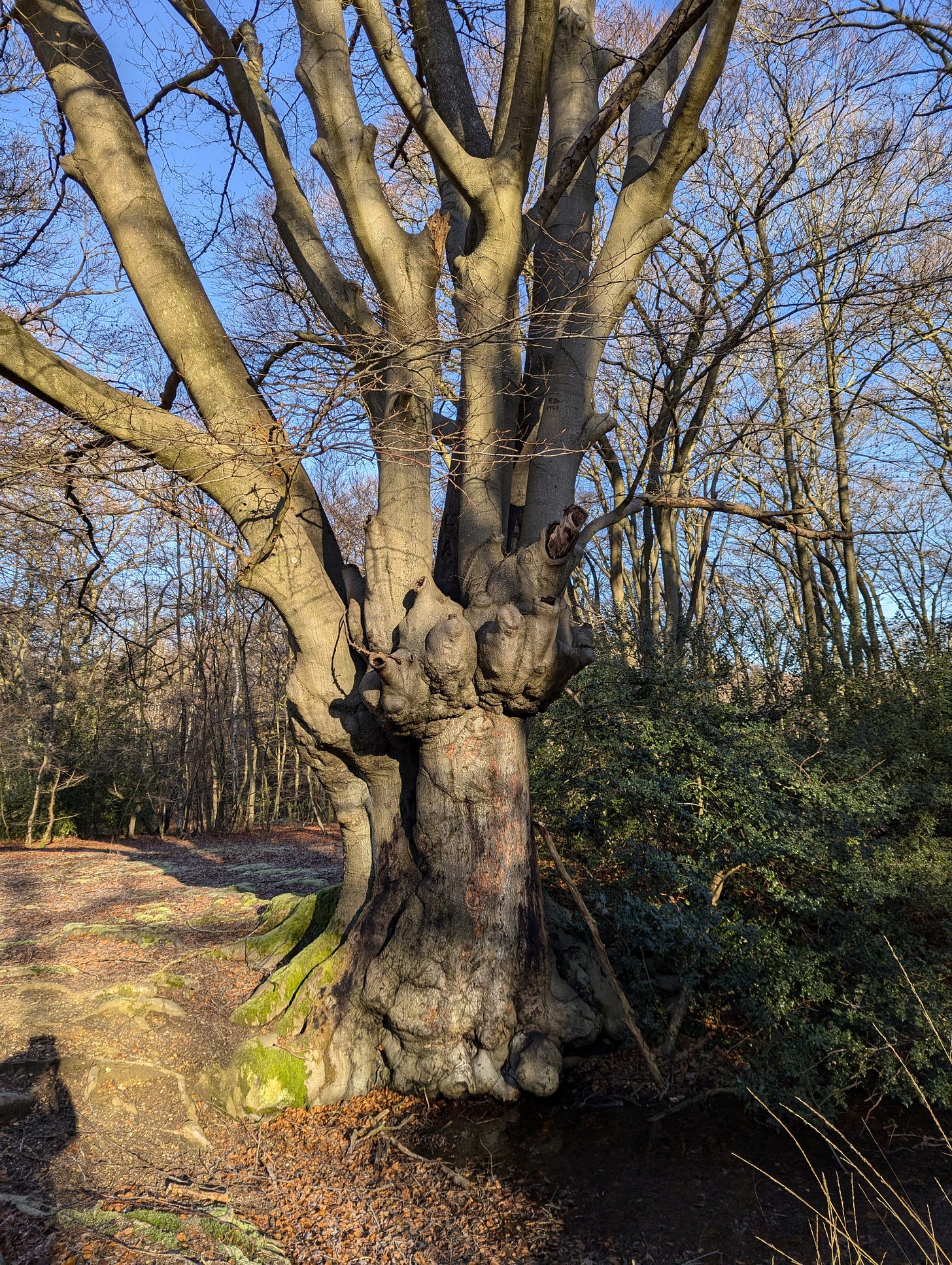
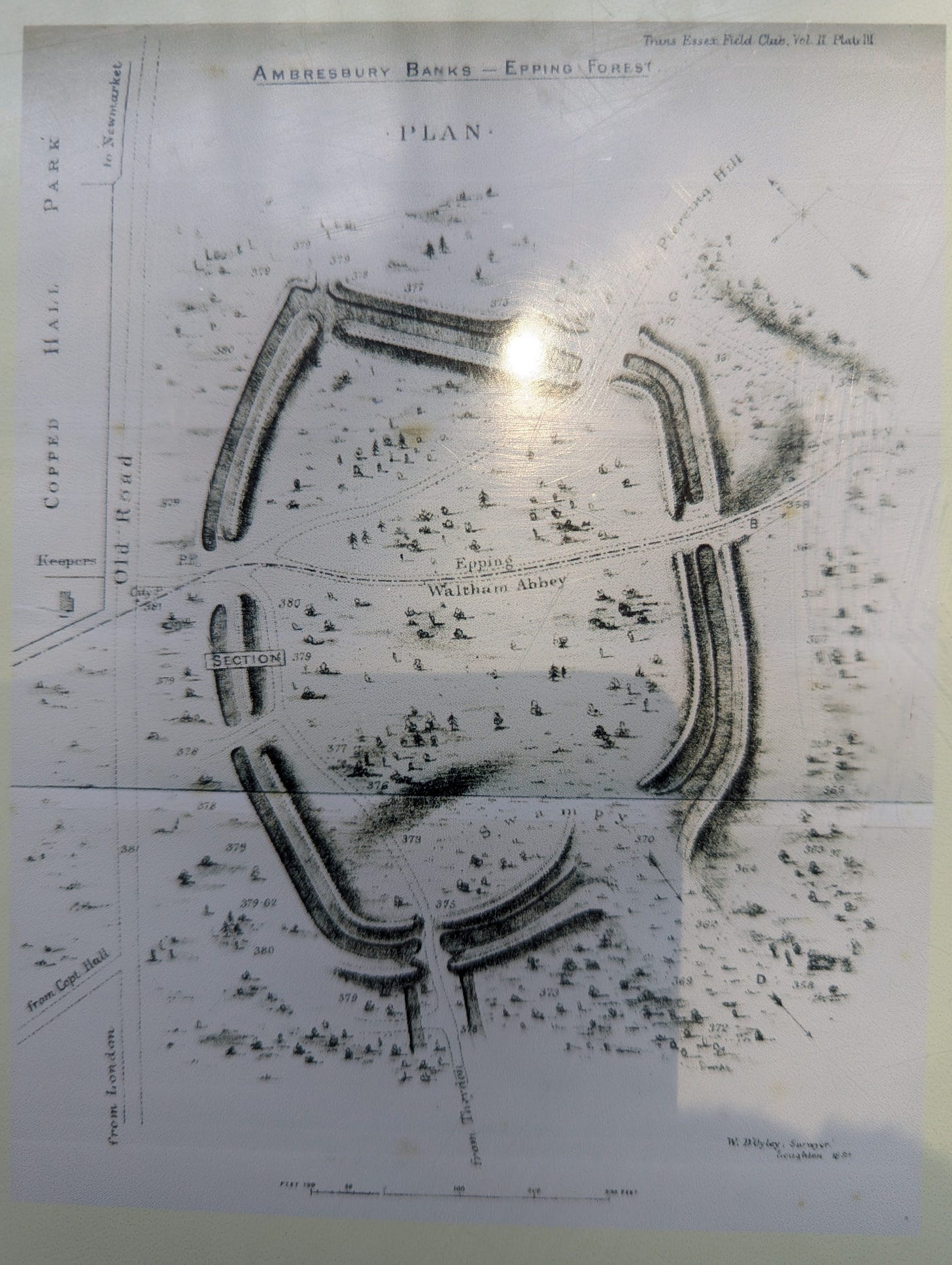

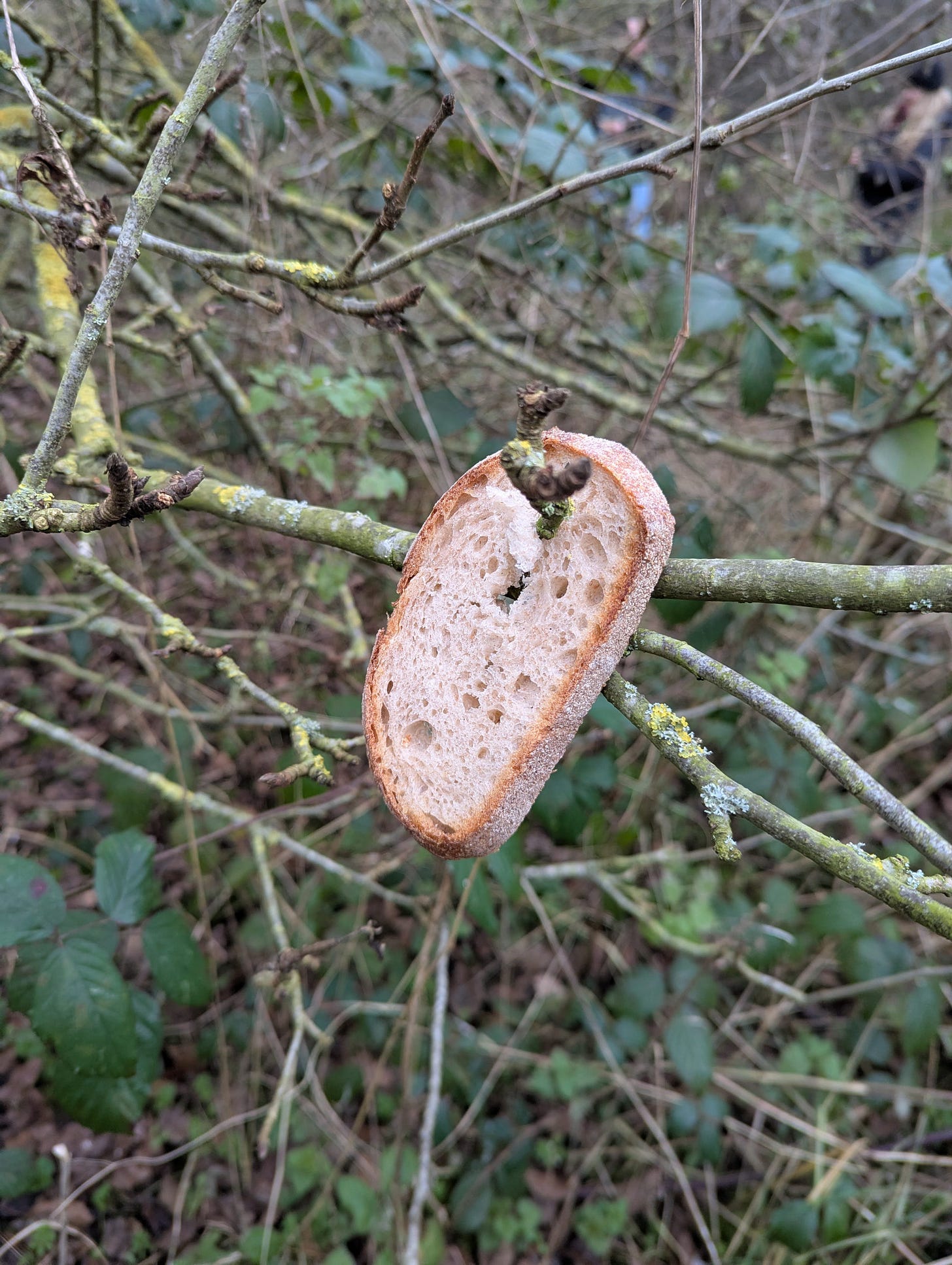
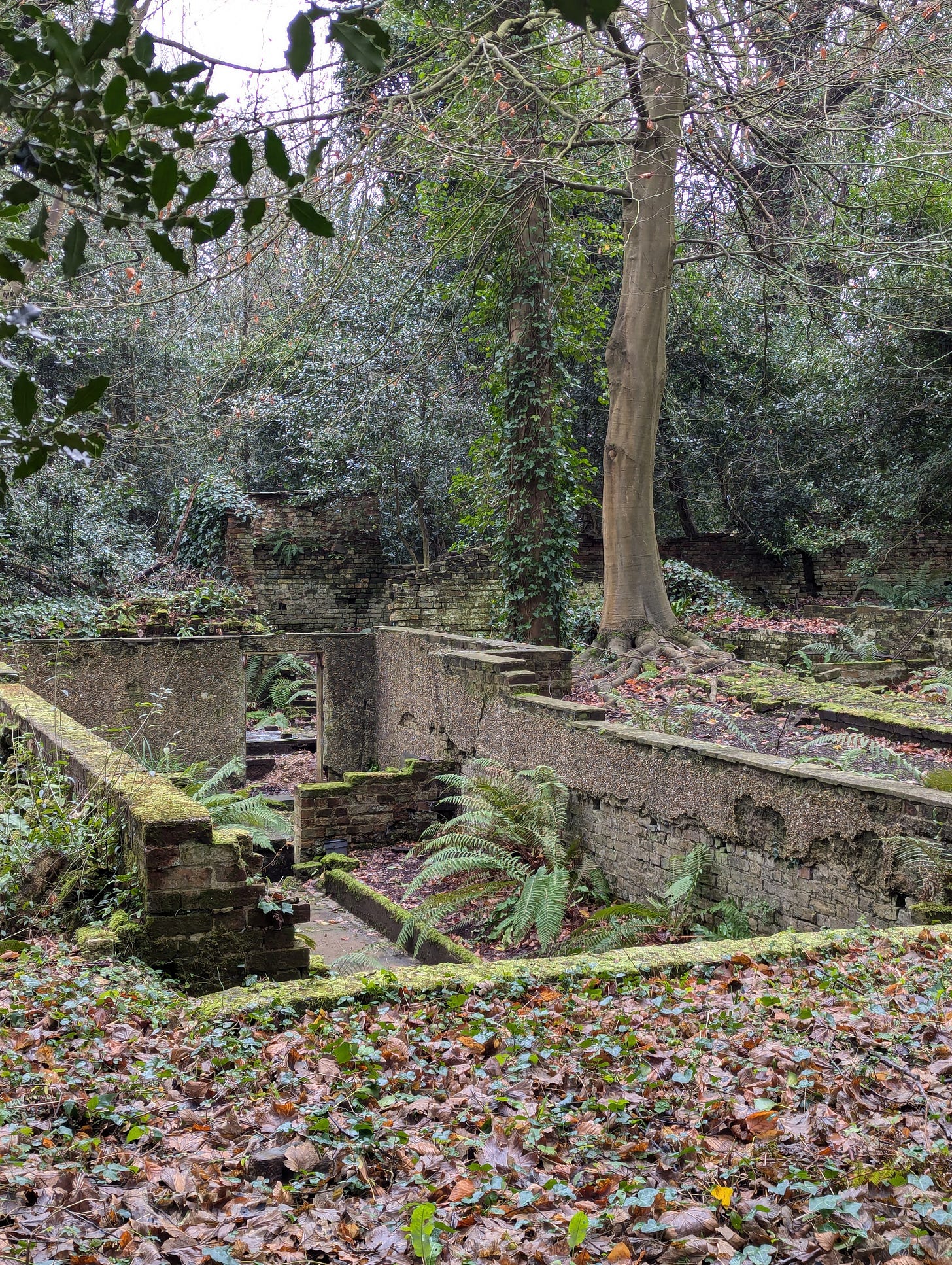
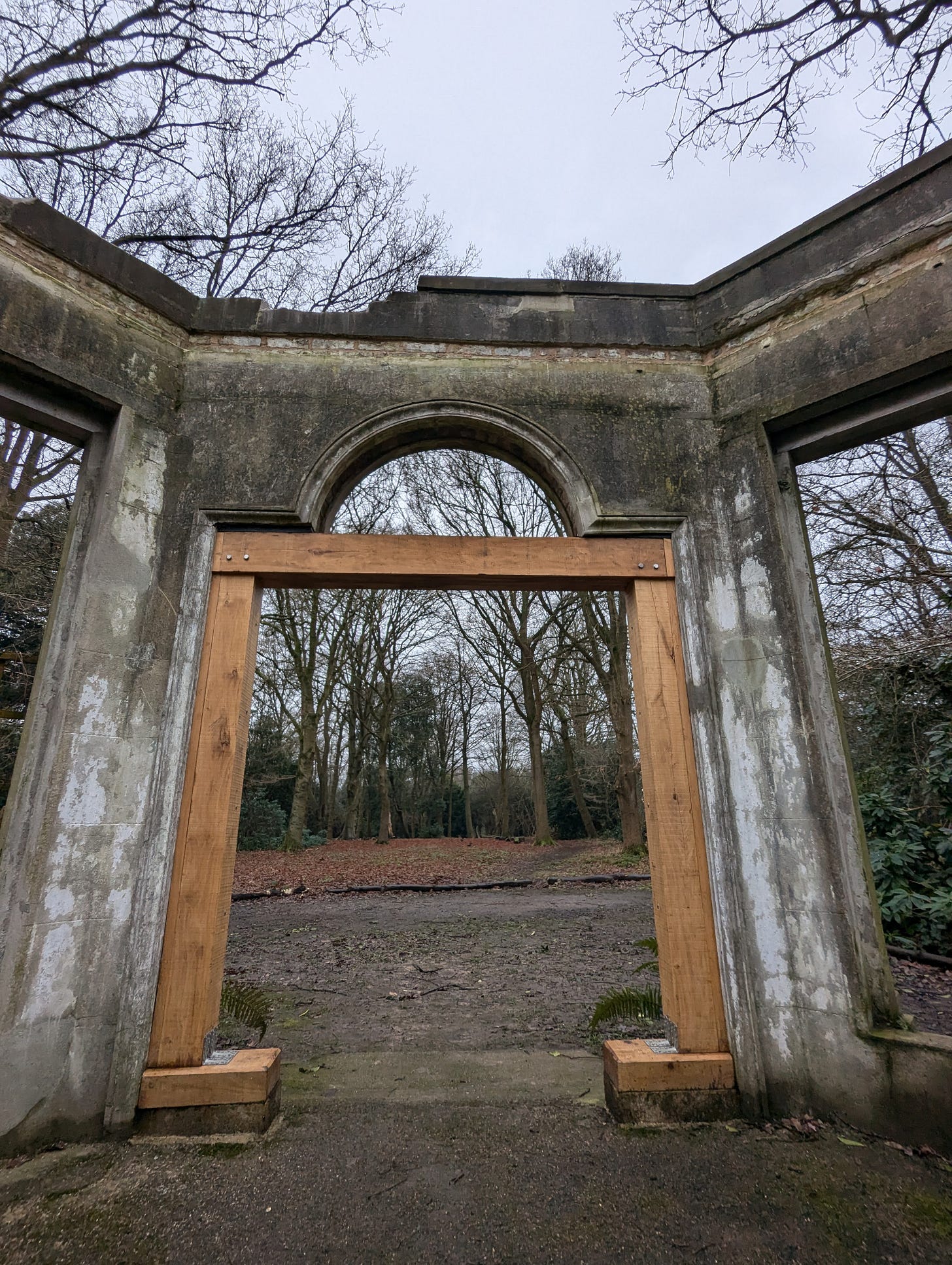
I feel the same about trees! "I still feel distressed when I witness one being cut down." So much resonance here, Lynden. I love your hubby's comment about the goblins.
Lovely review!